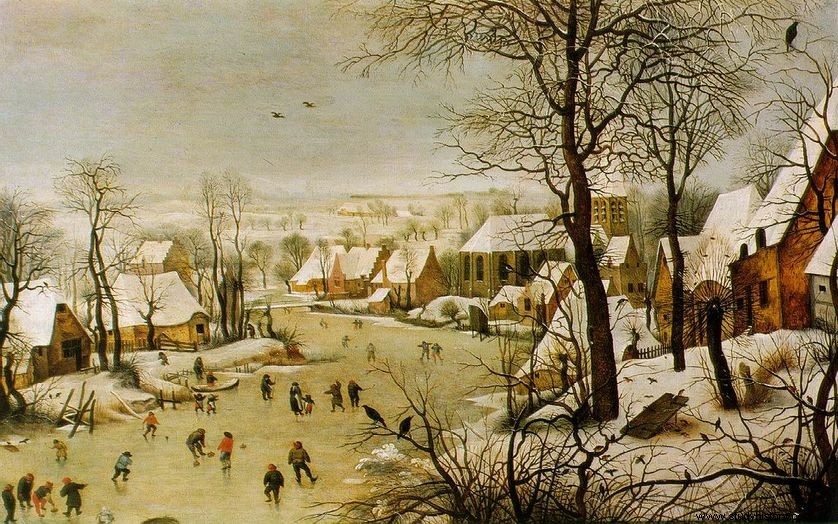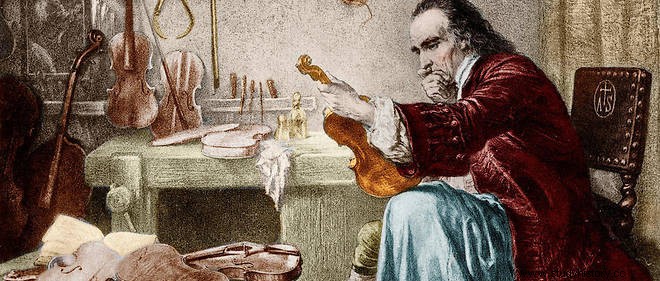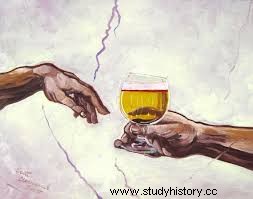Global warming, melting ice, endangered species… These are terms that are becoming more and more widespread today and which are more than familiar to us, in a 21st th context. century where the environment becomes an extremely politicized subject. In fact, climate has often played a major role in human evolution, and not always in the direction of a warming trend. On the contrary, the end of the Middle Ages saw the beginning of a long period of globalized climatic cooling which will last approximately five centuries, a period known as the “Little Ice Age” (or PAG, for those close to it…). This major climatic episode invites us to ask ourselves the following questions:how to adapt to a climate that is changing and becoming extreme? A problem that could not be more current...

What is PAG?
The Little Ice Age – term coined by the American historian François Matthes at the beginning of the XX th century – is characterized by a series of long and cold winters around the North Atlantic, going from the middle of the XIV th century to the middle of the 19 th century . The chronological milestones are the subject of debate between historians and climatologists, depending on the causes that are considered more decisive, which is why we prefer to give fairly broad approximations. In general, this period sees the average temperature drop by 1°C compared to the period which precedes it and which is called the "Medieval Optimum". However, this cold wave is not completely uniform over five centuries, it is necessary to specify certain fluctuations despite the general trend:for example, we distinguish three particularly virulent phases, the first between 1300 and 1380 called "the hyper little ice age », the second in the last third of the XVII th century, and finally the third between 1815 and 1860. Conversely, some summers have been recorded as particularly hot, as in the Alps in the mid-18th th century.
What are the reasons for such global cooling? Here again, things are not yet well defined… It would seem that PAG comes from several different phenomena. On the one hand, it is assumed that this is due to the massive eruptions of four volcanoes in the second half of the XIII th century. However, a volcanic eruption produces aerosols that can reduce the effectiveness of solar radiation, and the conjunction of these different eruptions could have a major climatic impact. As many large eruptions repeated during the period, this may have contributed to maintaining the climate decline over the centuries. On the other hand, some climatologists blame the cyclical decrease in solar activity , since the Sun follows secular cycles of luminous variability. However, it turns out that from 1400 to 1600, the Sun experienced a drop in radiation, and even more between 1650 and 1715 when the phenomenon, notable, is called “Mander minimum”. Finally, some specialists argue that it could also be due to increased precipitation , as in 1315, a year marked by extremely heavy rainfall.
The historian facing the sources
This phenomenon is very complex to study and calls on several disciplines to cross the sources, since at the time, we do not use the thermometer to take the temperature regularly – we have to wait for the end of the XVIII th century with the appearance of the degree Celsius. What sources are available to historians? There are many:historical data , such as harvest dates; literary data , such as parish letters and registers; but also the natural data that scientists analyze through paleoclimatology, by analyzing for example the evolution of glaciers or the rings of trees. It is a question of comparing these different sources to translate the written sources into objective data and to try to transcribe the data quantitatively, into numerical data.
In fact, the difficulty of such a work comes from these non-objective literary sources, which result from subjective perceptions. Let us take the example of David Fabricius, German pastor at the end of the XVII th century:this one records the weather in a notebook every day, and to do so, he uses 100 different terms, such as “cold”, “very cold”, or even “cold as a bed of straw”. Difficult to know what this represents in terms of degrees Celsius! However, the literature provides us with testimonies which, if they do not give exact data, nevertheless allow us to have an approximate idea. For example, in Holland at the end of the XVI th century, the first frosts are reported to have occurred at the end of August. Sacred record! Or in 1709, a year famous for its terrible "Great Winter", it is written that the Rhine was completely frozen, so that hunters were able to bring a boar across on a sled!
On the influence of the PAG on the arts
One of the multiple sources of the historian is the pictorial art, which delivers the particular representations that a population has, of its landscapes in particular. The Dutch painting of the XVII th century is a good illustration of this:there are many winter landscapes. This observation leads to the following hypothesis:could these be representations of this cooling that is the PAG, and which would have inspired artists with its particularly harsh winters? The winter of 1565 was one of the harshest in Holland. However, it is concomitant with the canvases of Bruegel, canvases which often represent a very harsh winter, with expanses of frozen water on which popular festivals are organized. Just watch Hunters in the Snow , which dates from that year:the landscape is completely white with snow, and the ponds serve as giant ice rinks! However, if there is a certain influence of the PAG on Dutch painting, the latter is not necessarily a faithful witness, since the written sources nevertheless underline a certain climatic variability, while the painters like to represent a freezing winter. . In fact, we can place this trend in its historical context, namely the golden age of Dutch painting, in this particular moment when the United Provinces (the Netherlands) separated from Spain and therefore sought the claim of its own identity, which would pass for example by the representation of a typically Dutch cold winter in comparison with sunny and torrid Spain.
Pictorial art is not the only one to have been influenced by the PAG:musical art has been too! Indeed, in the XVII th century, a luthier, a certain Stradivarius , became known for the exceptional quality of its violins, which still fascinates the greatest violinists today. Recent research shows that this quality would be due to the cold climate that encompassed Europe in the second half of the century, which would have allowed a particular homogeneity in the density of the wood used for the instrument. In fact, the density varies less in old woods because the trees have experienced colder temperatures, which means that they have grown more slowly and are therefore of better quality. Thus, this better density of the wood, more regular, allowed Stradivarius to manufacture violins with a divine sound. Despite everything, wood does not make the violin, and it was certainly necessary to combine the quality of the material with the great talent of Stradivarius to achieve such a feat!

What consequences for the population?
If art benefits in certain aspects from the icy cold of the PAG, men themselves suffer greatly. Snowy and prolonged winters lead to frosts on plantations, resulting in crop losses , and consequently great famines which may cause fronds. Indeed, until the industrial revolution of the 19 th century, urban societies depended on agricultural production and supplies from the countryside. However, this production is sometimes non-existent due to climatic crises, during which, for example, the water mills can no longer turn and sometimes remain blocked for up to three months by the ice. The stocks, most of the time, fail to meet the needs of peasant and city populations, who then revolt.
Another problem affects mountain populations:the advancing ice . The glaciers invade pastures and villages, to such an extent that the populations have to leave the submerged villages. Many stories and legends develop at this time in relation to the advance of the glaciers, as for example in the German Alps with the legend of Übergossene Alm :it would be a mountain pasture swallowed up by the ice, which was once prosperous but which was swallowed up as a punishment for the embezzlement of its inhabitants. Quite radical as a moral, after all!

How to adapt?
European populations then sought new strategies to adapt to these dreadful winter situations. Some products are further developed, such as beer to respond to the lack of running water, or in Amsterdam the invention of the icebreaker (vessel used to open shipping lanes taken by the ice) in order to allow the supply of the city.

The end of the reign of Louis XIV was marked by freezing winters which, combined with the warlike policy of the king, caused many ravages. We often talk about the terrible winter of 1709, a very long winter, during which it was down to -16°C in Paris. The Seine was completely frozen. It is even reported that the king's wine froze! However, this exceptional winter killed only 600,000 people compared to the famine of 1693-1694 which killed 1.7 million (as many as the First World War). Why such a discrepancy? Thanks to the “miracle of barley”, in the sense that sowing of barley was authorized in the spring, as soon as the thaw came, to make up for all the lost harvests. And the harvest was plentiful!
Finally, this adaptation was made by new infrastructures. Huge granaries were built which served as a food bank due to their storage capacity, even if the reserves could not last more than a year since wines and harvests did not keep well. Moreover, this is the time when windmills will gradually replace watermills. The PAG is therefore accompanied by real technical progress.

Thus, the Little Ice Age deeply cooled Europe from the end of the Middle Ages, and this climatic situation lasted for five centuries - even if it is necessary to recognize considerable variations which prevent to consider this period in a completely uniform way, since, for example, the Renaissance was less affected by this phenomenon. Nevertheless, these cold spells forced the men of the time to adapt gradually, until the trend reversed from the 1860s, with the entry into the industrial era. Today, the average temperature has increased by 1°C since the 19 th century:unlike the men of the Middle Ages, we are not facing a cooling but a warming. At their school, we also learn to adapt to this new climatic situation!


